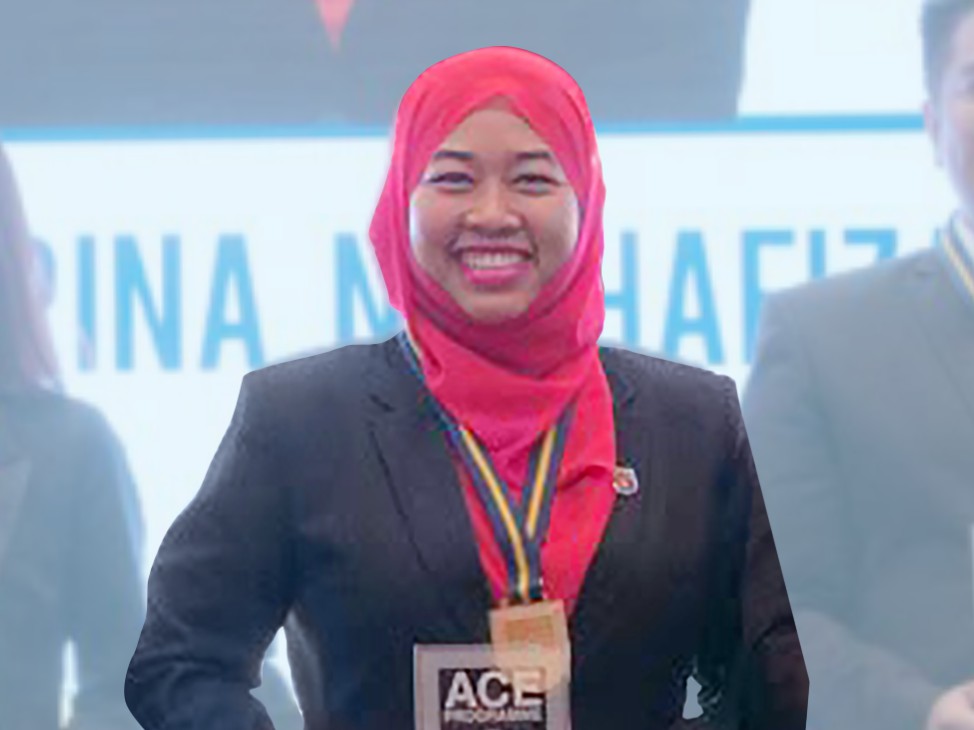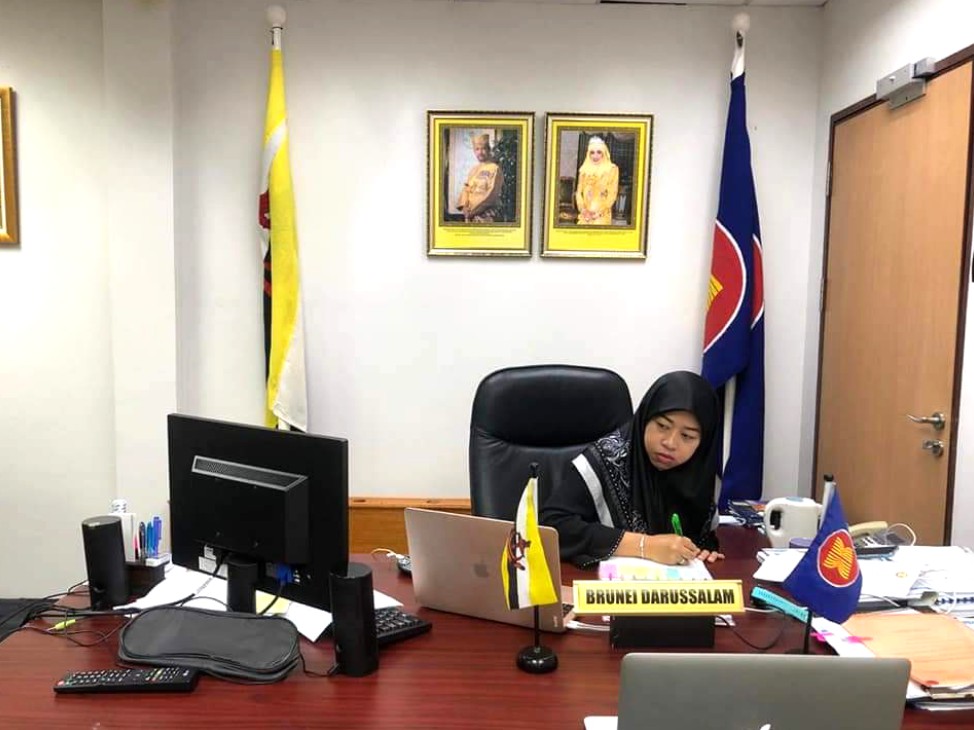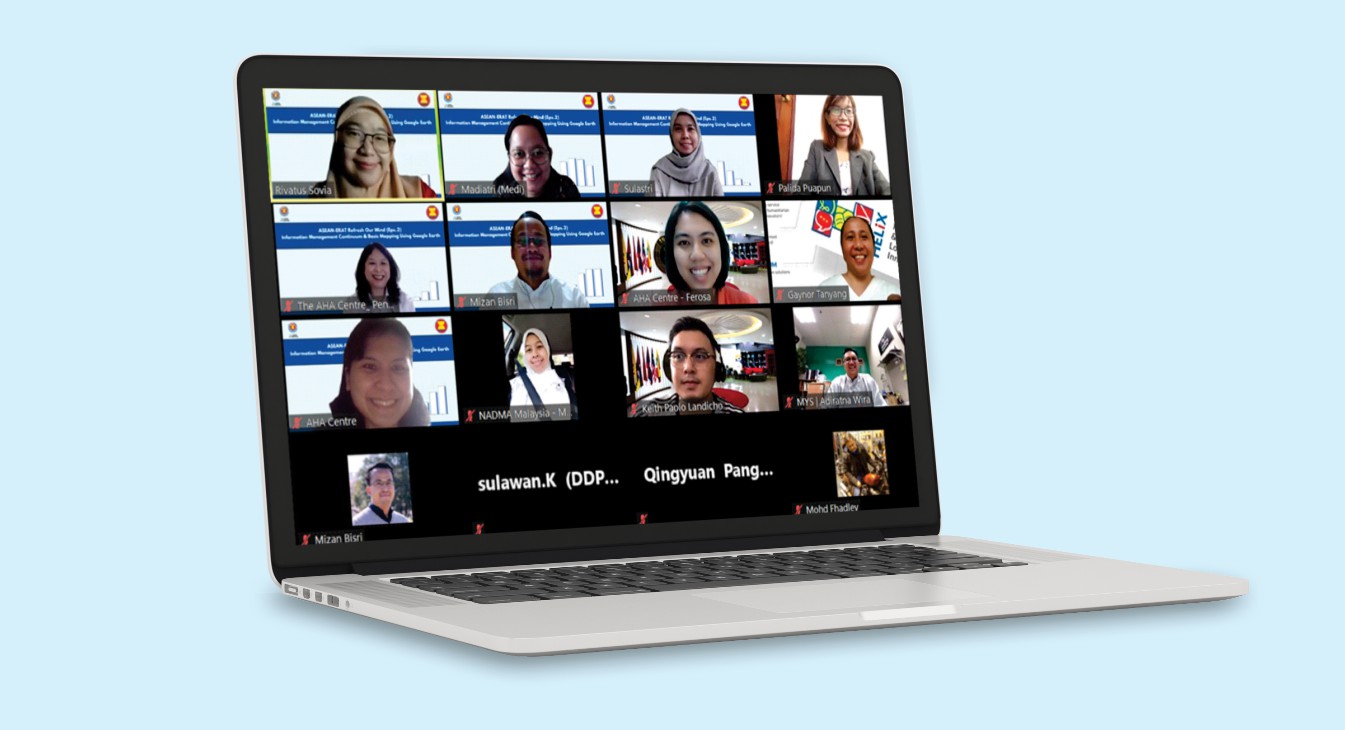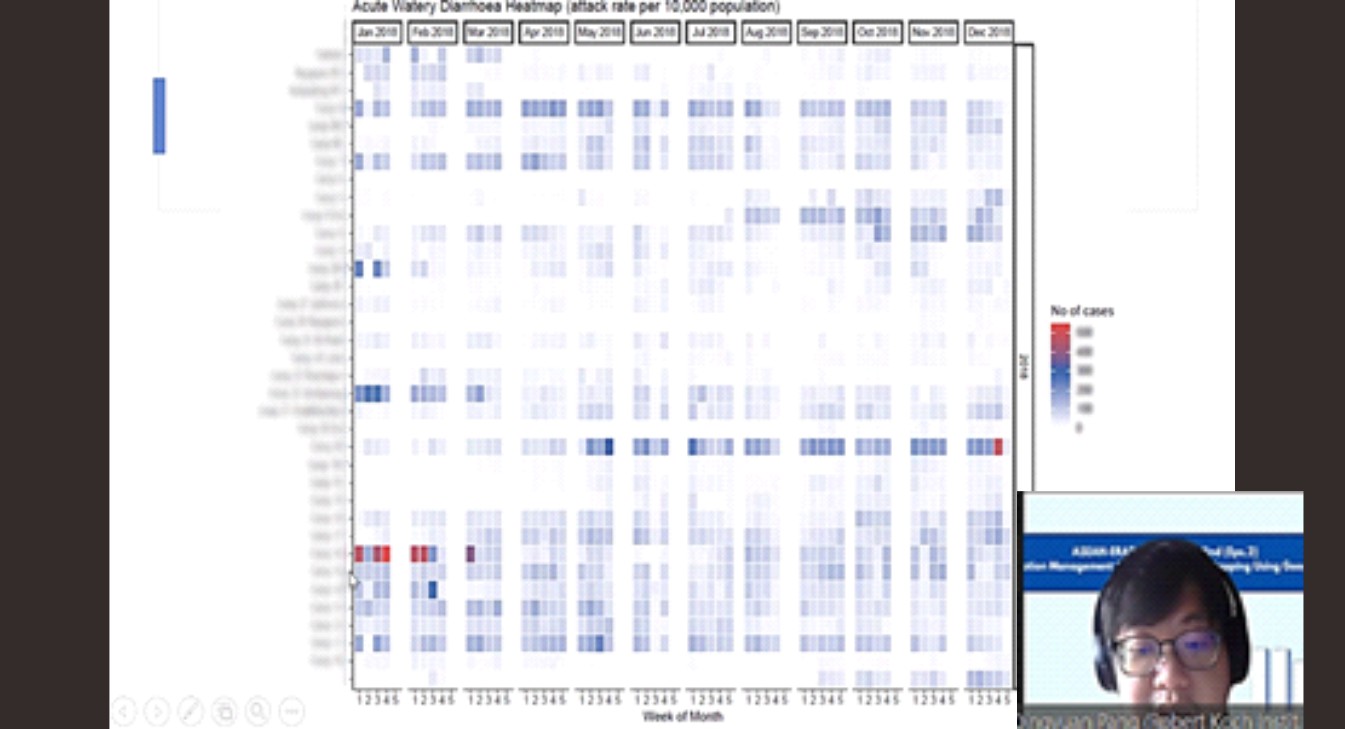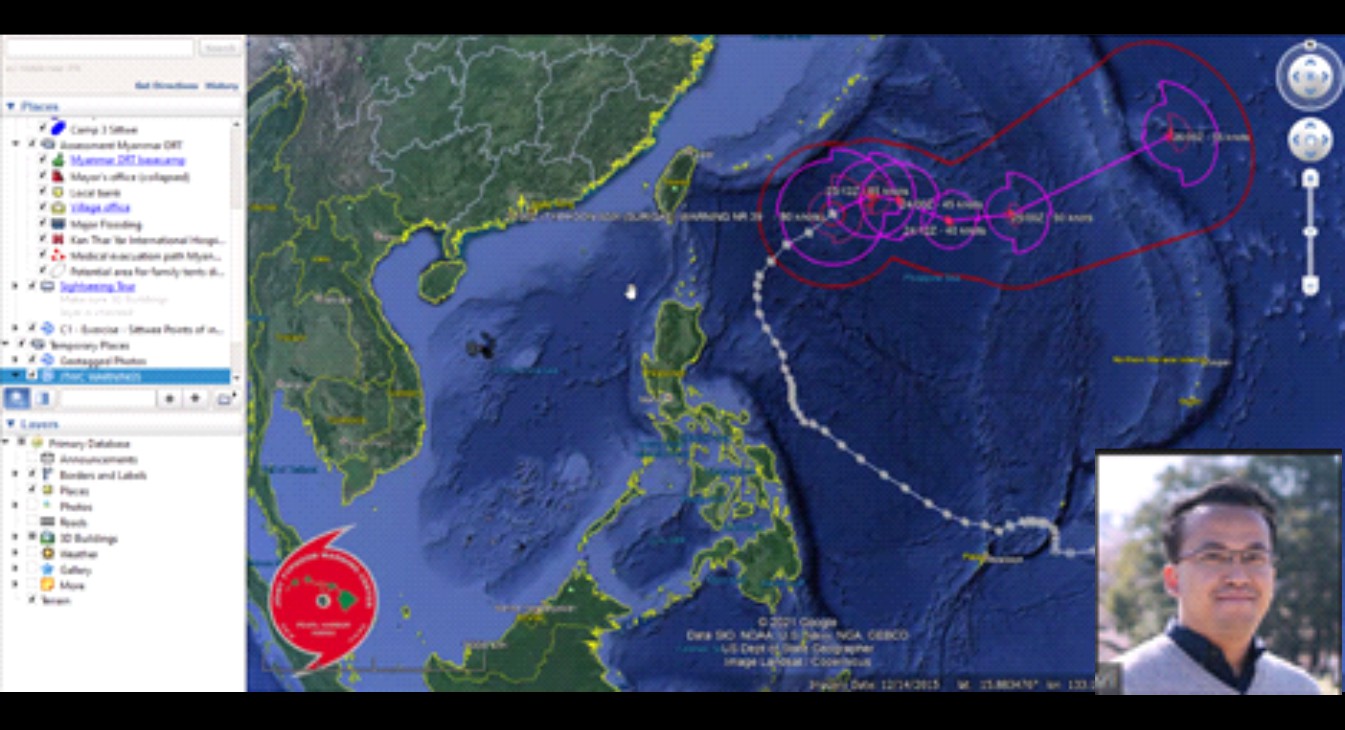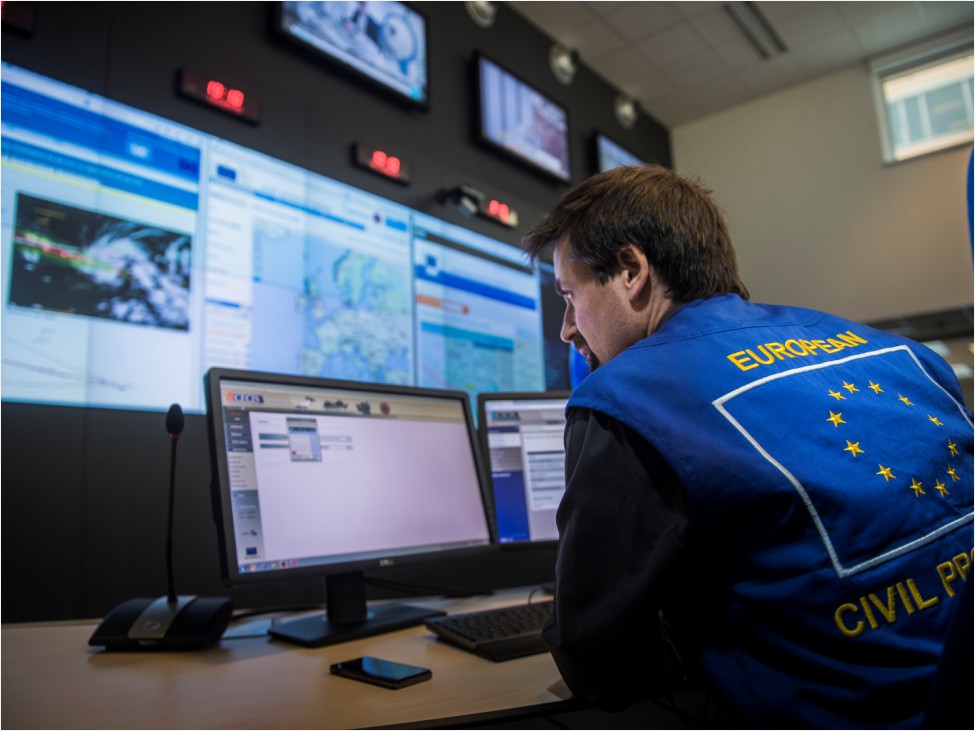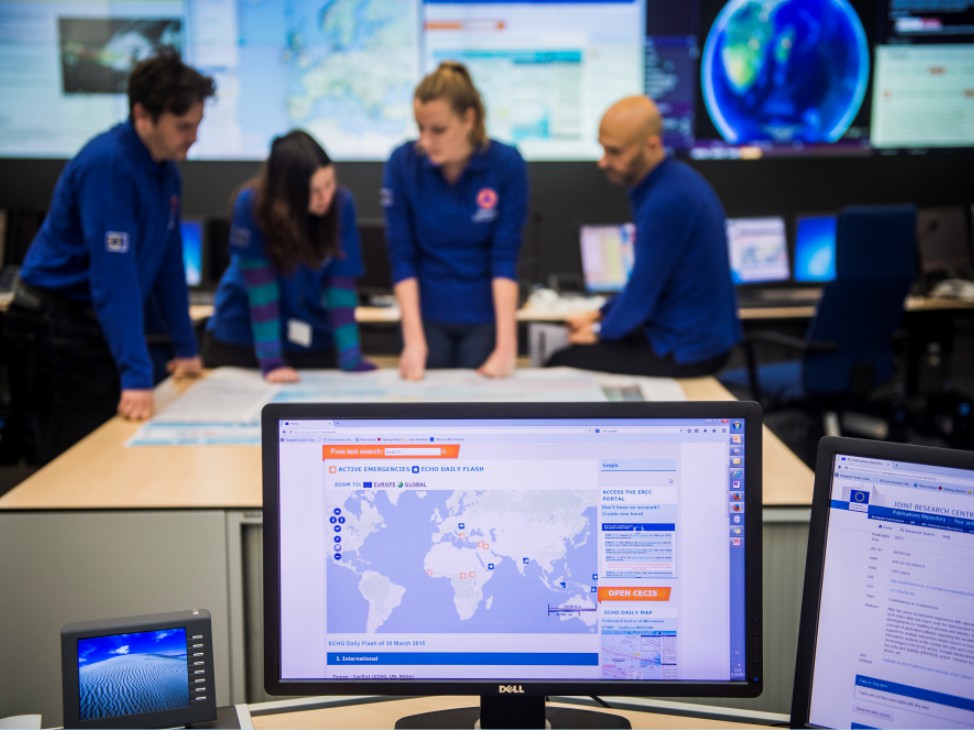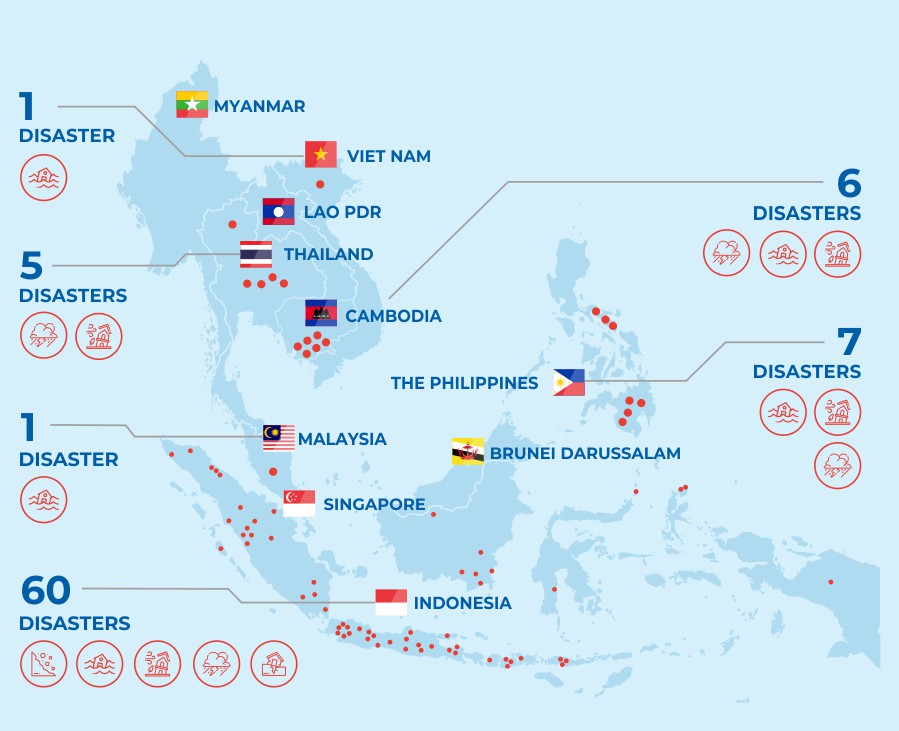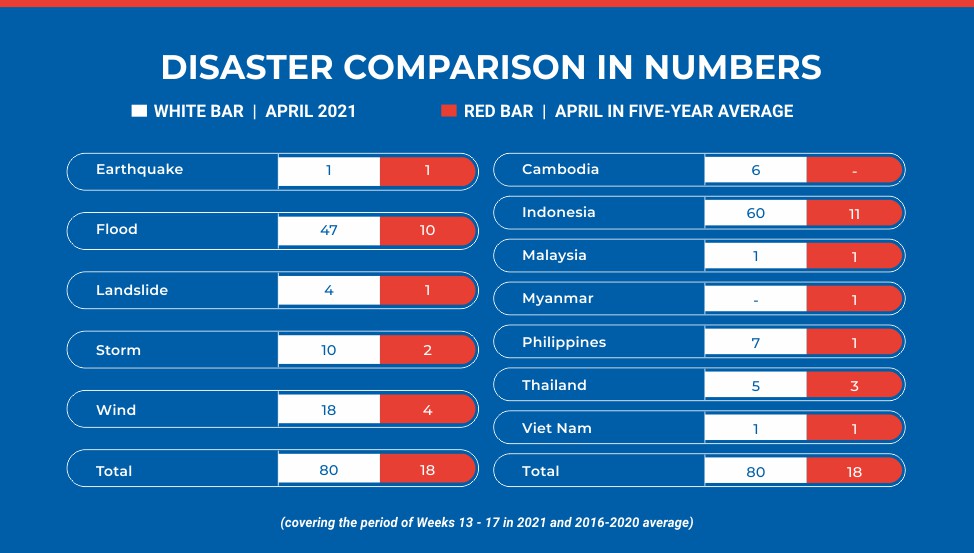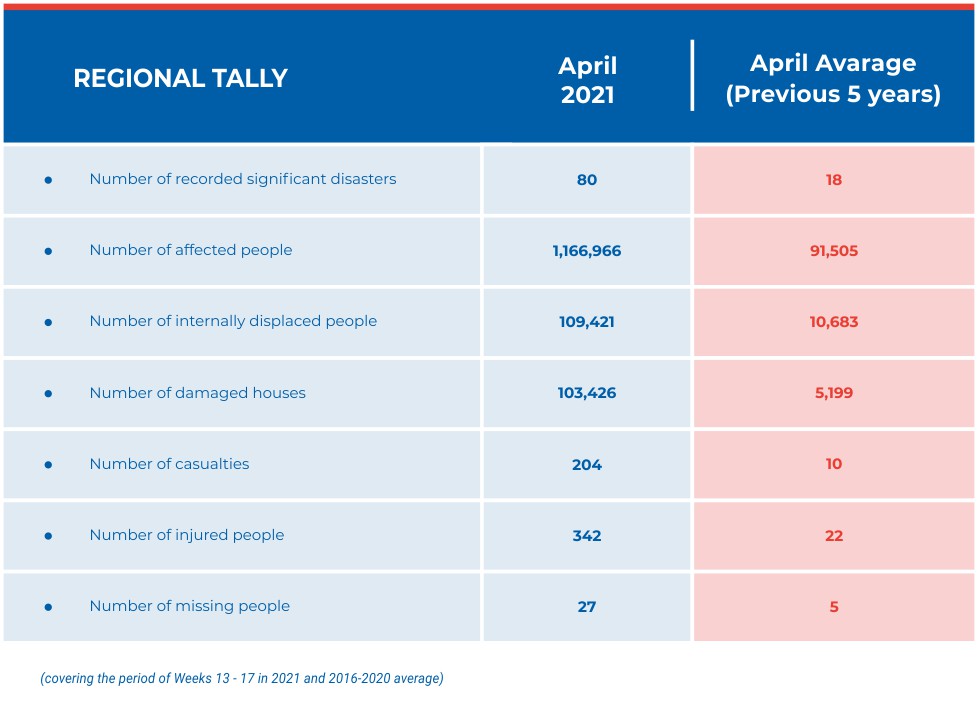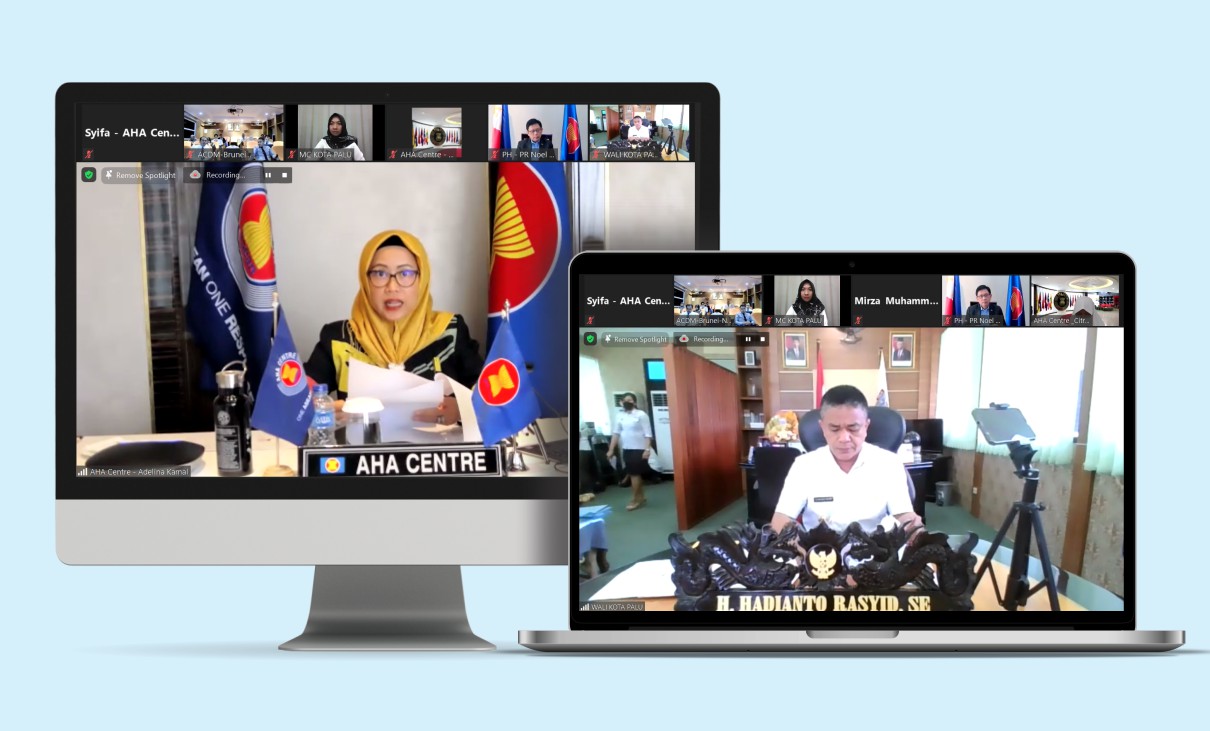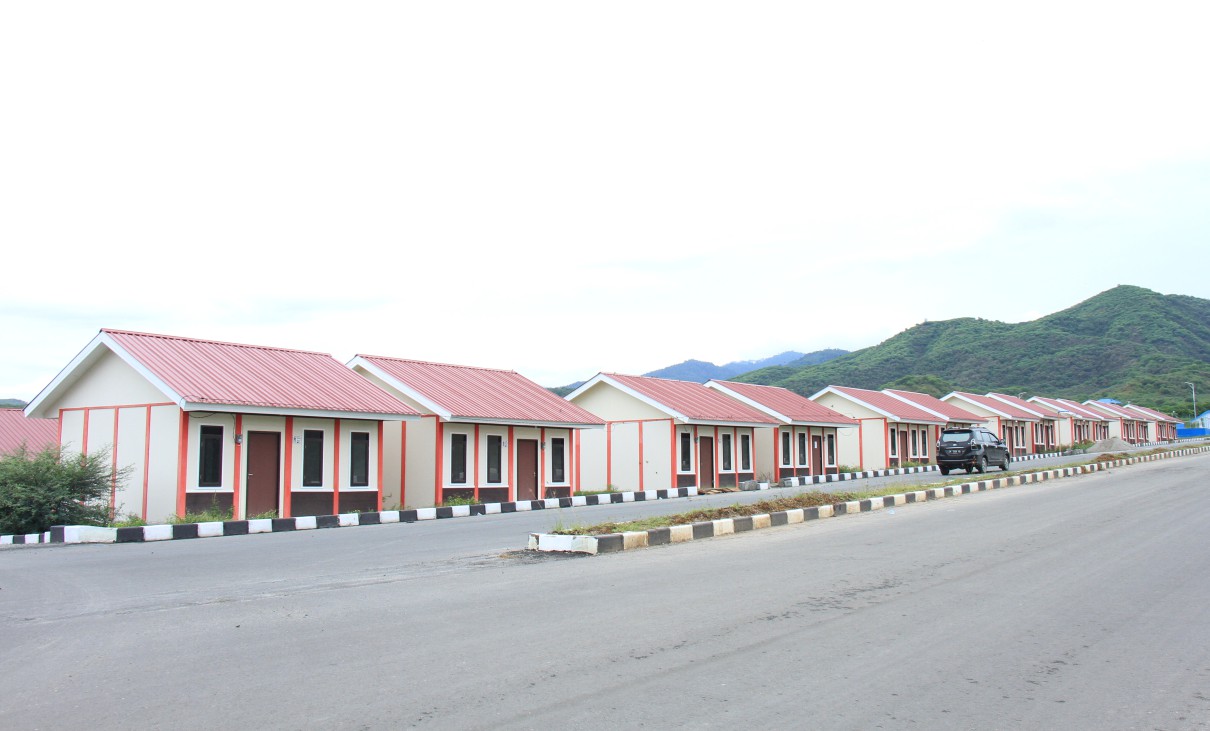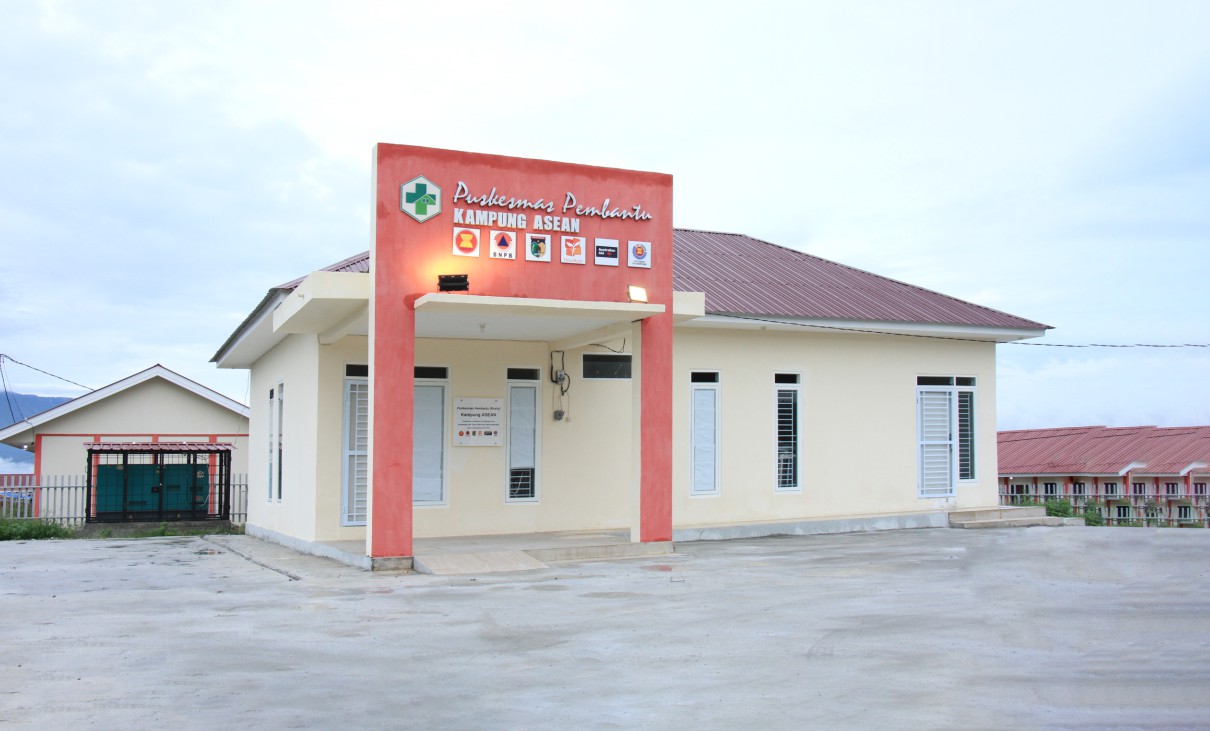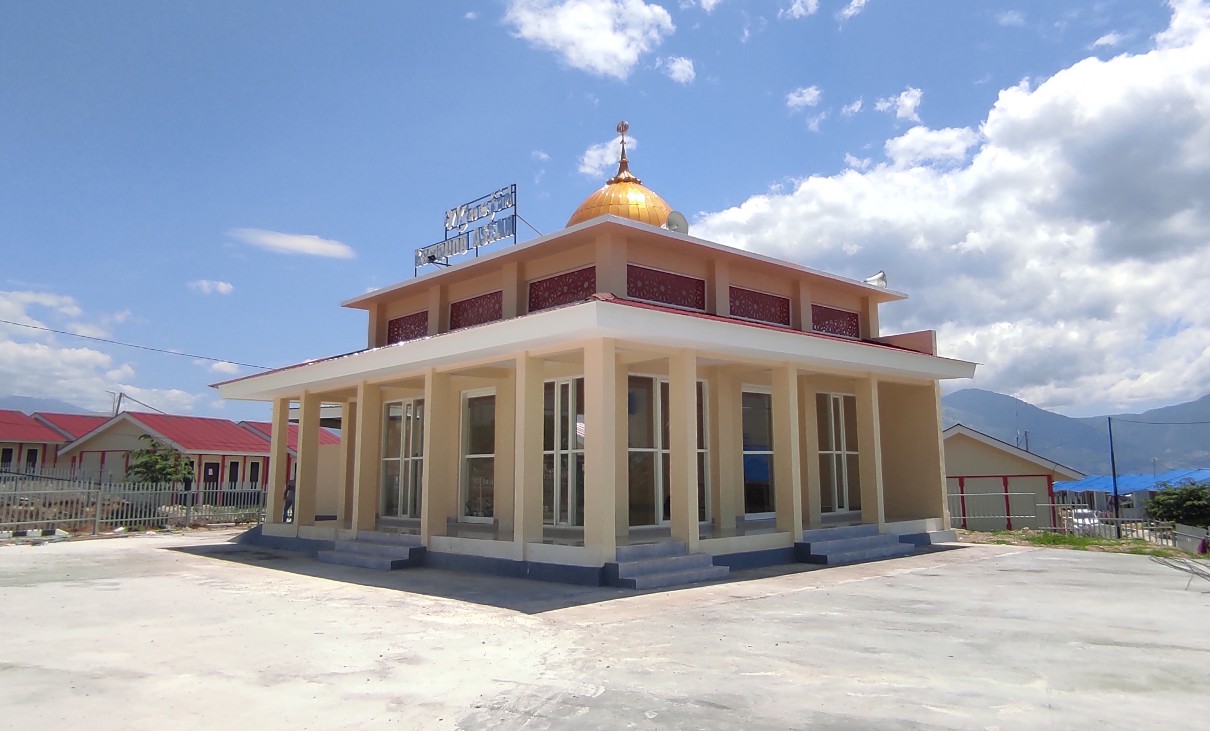Vol 72 – RINA NURHAFIZAH REZZA BINTI ABDUL RANI

RINA NURHAFIZAH REZZA BINTI ABDUL RANI
The Column is pleased to feature Ms. Rina Nurhafizah Rezza Binti Abdul Rani, a member of the ASEAN Emergency Response and Assessment Team (ASEAN-ERAT) from Brunei Darussalam and the current Head of Operations at the National Disaster Management Centre (NDMC), a position that she has held since September 2018.
The year 2020 was among the most challenging of her career when the COVID-19 pandemic hit Brunei in March. The NDMC had been monitoring the outbreak since the end of 2019 and was engaged in preparation and close coordination with the Ministry of Health. From January 2020, the NDMC made plans to repatriate Bruneian students from abroad and these plans included identifying isolation venues at hotels and government facilities, and the procurement of personal protection equipment (PPE) supplies for frontline staff at land, air and sea borders.
When the coronavirus hit Brunei, the NDMC took on the role of supporting non-clinical operations with the Ministry of Health by facilitating the operations at the Ministry of Health Emergency Operation Centre (MOHEOC). From the beginning of the outbreak in Brunei until the Entry Travel Pass Portal System set up by the Prime Minister’s Office was introduced in September 2020. This involved ensuring all individuals arriving in Brunei by air, land or sea were isolated directly in their respective COVID-19 monitoring centres.
Ms. Rina was tasked with monitoring all non-clinical operations. Brunei had experienced pandemics before, including the H1N1 pandemic in 2009, but policies and procedures were rapidly amended and new ones introduced as a result of the dynamics, challenges and need for damage control throughout the operation. Also taking into consideration other countries’ experiences, many changes were made in order to ensure that best practices were implemented. Brunei fully optimised the government’s whole-nation approach with all government and non-government agencies providing full support in their respective roles.
She has been with the NDMC since 2009. However, her career was mostly spent at the planning and analysis division. She admits that sitting in the operations division has been a major challenge for her, but her knowledge and expertise in training and project management, related to disaster risk reduction and climate change adaptation and resilience, have been invaluable in her current position.
Ms Rina is also a graduate of the AHA Centre Executive (ACE) Programme. During her time on the ACE Programme, she received the ACE Most Valuable Player 2019 Award together with two colleagues for consistently demonstrating high levels of engagement and great initiative in collaborating effectively.
She says that her ACE training was a great inspiration during the pandemic. She remembers a message from H.E. Jo Tyndal, New Zealand High Commissioner to Singapore, in a Leader’s Talk session while she was in ACE, “One of the important things for a leader is leading with kindness – to lead with patience, empathy and respect for other people. Kindness is not about naivety or weakness, it is about strength.” This message gave encouragement to her, especially during the most difficult times managing the pandemic.
“It was a very difficult period, but I am glad that I was there with the rest of the coordinators and frontliners working together. There were times where we were really exhausted, worn out, but with good leadership and teaming up with high-spirited people and the support given to each other, we managed to do it together and plant in our minds that achieving our ultimate objective in ensuring the safety of our nation was the most important thing for all of us. To date, Alhamdulillah, Brunei has already passed one year with no local transmissions,” she said.
Since graduating from the ACE Programme, Ms Rina has continued on her career within the NDMC. She has also taken an active role in representing the NDMC in the meetings of the ASEAN Committee on Disaster Management (ACDM), including serving as an ASEAN-ERAT advisory member and representing the NDMC at the meeting of the Working Group for Preparedness, Response and Recovery.
Talking about her hopes for the future, she hopes that ASEAN can stand united, and be able to achieve its objective of continuously and proactively creating a safe, adaptive, inclusive and disaster-resilient region, and fulfilling its motto of One ASEAN One Response.
Written by : Hillary Michael Hegarty | Photo Credit : Theophilus Yanuarto
- Published in The Other Side
Vol 72 – ASEAN-ERAT REFRESH OUR MIND ON INFORMATION MANAGEMENT

ASEAN-ERAT
REFRESH OUR MIND ON INFORMATION MANAGEMENT
In these days of ever-increasing remote working it is easy to become rusty, to lose the day-to-day contact and interaction with colleagues and fellow professionals who can keep us up to date with all the latest news and developments that allow us to remain at our sharpest in our respective fields of operations, and to miss out on tips and innovations that can facilitate our work.
With that in mind and based on positive feedback from the ASEAN Emergency Response and Assessment Team’s (ASEAN-ERAT) Refresh Our Mind series, which started in the early part of this year, the AHA Centre is continuing the series to keep ASEAN-ERAT members engaged and connected from their homes or offices during the course of the pandemic. The second edition of the ASEAN-ERAT Refresh Our Mind series helped ASEAN-ERAT members to brush up their knowledge on information management, often using simple, readily available and free-to-use software and open-source material, and all in only 100 minutes.
Before the second edition commenced, the AHA Centre introduced ASEAN-ERAT members who had registered for the event to the AHA Centre’s Learning Management System. The ASEAN-ERAT members took the opportunity to update their knowledge about the key aspects of the Information Management continuum and got an introduction to Google Earth by watching short videos. Then, the ASEAN-ERAT members met through a video call to continue their learning journey on the same topic by taking part in an interactive quiz and conversing through a group discussion. The group discussion flowed well with an informal atmosphere, allowing the ASEAN-ERAT members to enjoy their Friday afternoon with small talk while sipping their favourite drinks, or simply waiting to break the fast for those who observed Ramadhan.
The discussion heard from an ASEAN-ERAT member from Indonesia, Mr Mizan Bisri, a former officer at the AHA Centre under the Disaster Monitoring and Analysis Unit. Currently he is Assistant Professor in Disaster Management at Kobe University and is a founder of CARI, a web-based knowledge management platform for disaster management, and he described the use of Google Earth for basic mapping to quickly capture the most reliable and visual information for initial-stage disaster responses.
His explanation was corroborated by the experience of another ASEAN-ERAT member, Mr Qingyuan Pang, from Singapore, an epidemiologist with the World Health Organisation, working in Cox’s Bazaar. Before he joined WHO, Mr Pang was the Assistant Director of the Disaster Monitoring and Analysis Unit of the AHA Centre and he explained that he used Google Earth as it was faster and much less tedious than other mapping tools. He also cited heatmapping, the graphical representation of data where values are depicted as colours, as another tool to help him visualise data and monitor diarrhoea outbreaks in Cox’s Bazaar.
In addition to the extended discussion on data visualisation, he shared the humanitarian icons from UNOCHA with other ASEAN-ERAT members. Mr Adiratna Wira Adnan, Senior Assistant Director in the Technical and Infrastructure Department of Malaysia’s National Disaster Management Agency, suggested using the icons as the standard reference for all ASEAN-ERAT members.
The AHA Centre wrapped up the second edition of the ASEAN-ERAT Refresh Our Mind series with the announcement of the quiz winners and prizes for those who completed their self-refreshment through the ASEAN-ERAT Learning Management System. The winners were Ms Murni Mat Amin (Malaysia), Ms Gaynor Tanyang and Mr Irvin Miranda (the Philippines), and Mr Pang (Singapore). Congratulations to all the winners!
Written by: Madiatri A. Silalahi | Photo Credit : ERAT PMT
- Published in AHA Centre Diary 1
Vol 72 – AHA CENTRE AND ERCC, SHARING THE SAME VALUES AND DNA – POOLING REGIONAL RESOURCES ESSENTIAL IN DISASTER MANAGEMENT

AHA CENTRE AND ERCC, SHARING THE SAME VALUES AND DNA
POOLING REGIONAL RESOURCES ESSENTIAL IN DISASTER MANAGEMENT
Disasters are no respecter of developed or developing nation status, they can strike anywhere in the world, either as a result of natural phenomena or man-made causes. The key to mitigating such disasters is of course planning and preparation, and in the European Union (EU) the organisation mandated with the responsibility of delivering assistance to disaster-stricken areas, whether in EU member states or overseas, is the Emergency Response Coordination Centre (ERCC). The Column looks at the role of the ERCC and examines how it can assist ASEAN in terms of disaster management.
The ERCC describes itself as the heart of the EU civil protection mechanism. It coordinates the delivery of assistance in the event of disasters, providing relief items, expertise, civil protection teams, specialised equipment and much else. The centre ensures the rapid deployment of emergency support and acts as a coordination hub for all EU member states, as well as the United Kingdom and six additional participating states, and the affected country and civil protection and humanitarian experts. The ERCC operates around the clock and can help any country affected by a major disaster upon request from the national authorities or a United Nations body.
Since its inception in 2001, the EU Civil Protection Mechanism has responded to over 420 requests for assistance inside and outside the EU. In developing countries, civil protection assistance typically goes hand in hand with EU humanitarian aid. Experts in both fields work closely together to ensure the most coherent analysis and response, particularly in response to complex emergencies.
A reserve of pre-committed assistance is maintained on standby that can be immediately deployed. These resources provide a fast and coherent European response when the need arises. The quality of the response is ensured through the establishment of specific criteria and a certification process. The ERCC can identify any gaps in European assistance and propose how these gaps can be covered, through financial support from the EU. Pooling member nations’ assistance at a European level boosts the efficiency of the response to any given disaster and can avoid duplication of relief efforts and ensure that assistance is tailored to the needs of those affected.
In early 2020 the EU announced it would launch a EUR 10 million programme to support the AHA Centre, in the form of the “Integrated Programme in Enhancing the Capacity of AHA Centre and ASEAN Emergency Response Mechanisms” or EU-SAHA. This new initiative is designed to strengthen the capacity and sustainability of the centre to achieve operational excellence in disaster monitoring and emergency response; and to enhance mechanisms for the ASEAN leadership to respond as one, through excellence and innovation in disaster management, along the lines of the ERCC model.
Additional support from the European Union was provided through a separate project called “Leveraging ASEAN Capacities for Emergency Response” (LACER), which is implemented by a consortium consisting of the Swedish Civil Contingency Agency (MSB) and the Estonian Rescue Board (ERB). The project is looking to strengthen potential collaboration between the AHA Centre and the European counterparts, in particular through sharing of experiences, knowledge sharing, and capacity building. The AHA Centre was able to engage the ERCC through the support of this project. On 26 January 2021, the LACER project conducted its first webinar to introduce to the AHA Centre the systems and mechanism of the ERCC. Mr. Ionut Homeag, the Team Leader at ERCC, was invited as a speaker to share his knowledge and experiences.
Speaking after the signing of the agreement at the ASEAN Secretariat on January 27, 2020, EU Ambassador to ASEAN H.E. Igor Driesmans stressed the regional approach to dealing with disaster through jointly pooled ASEAN Member States’ expertise and assets managed by the AHA Centre. This presents not only a workable model but also a mechanism to deal with the transboundary nature of disasters, especially climate-induced events, which require strong collaboration and partnership, as has achieved by the EU under the EU Civil Protection Mechanism (EU-CPM) and shepherded by the ERCC, an entity that shares the same values and DNA as the AHA Centre.
There will be several exchanges between the AHA Centre and the ERCC within the framework of the LACER project, aimed at establishing a platform for mutual ASEAN – EU exchange on the institutional as well as the peer-to-peer level.
Written by : Hillary Michael Hegarty | EU/ECHO/Ezequiel Scagnetti
- Published in Partnership
Vol 72 – AS LOCAL AS POSSIBLE: STUDY ON LOCALISATION OF DISASTER MANAGEMENT DURING PANDEMIC AS LOCAL AS POSSIBLE

AS LOCAL AS POSSIBLE
STUDY ON LOCALISATION OF DISASTER MANAGEMENT DURING PANDEMIC
Localisation is an international process involving the empowerment of local actors in humanitarian assistance. At the 2016 World Humanitarian Summit, leaders declared that humanitarian action should be “as local as possible, as international as necessary.” This definition highlighted the disparities among international humanitarian actors, UN agencies, international non-governmental organisations and local humanitarian actors in disaster management. Since there is no universal definition, stakeholders debate the different interpretations of localisation. Drawing from the insights of key informants, the following working concept of localisation was used:
Localisation is a process of recognizing, respecting and strengthening the independence of leadership and decision-making of local actors in humanitarian and disaster response. Local actors include national actors, sub-national actors, local authorities, local communities and local civil society organisations.
In order to better understand how localisation is perceived in the region, the AHA Centre collaborated in research with the School of International and Public Affairs (SIPA) at Columbia University and the Center for Excellence in Disaster Management and Humanitarian Assistance (CFE-DM) based in Hawaii. This required stakeholder analysis to (i) determine how localisation evolved, particularly since the beginning of the COVID-19 pandemic, (ii) define the role of the AHA Centre in operationalising local efforts and analysing sustainable methodologies and (iii) reflecting on adaptations of the broader Southeast Asian humanitarian system.
The research, through qualitative interviews and quantitative surveys, explored the perspectives of key stakeholders in the humanitarian sector. These informants and respondents included ASEAN Member States and other governmental bodies, donors, international organisations, including the United Nations (UN) and non-UN affiliated, local, national and non-governmental organisations, national societies and other community partners. The surveys and the interviews were conducted between February and March 2021, while the final report was completed in April 2021.
The definition of localisation depends significantly on each organisation’s scope and scale of engagement. Respondents from international organisations deemed national organisations as local, while national organisations deemed actors at the sub-national and community levels as local. They also recognised capacity-building as the most integral dimension of localisation, thus emphasising the importance of empowering local actors through laws, training and knowledge sharing, among other aspects.
Survey respondents cited the AHA Centre as having an essential role in coordination and providing visibility to regional and national actors. Interviewees and respondents expressed the belief that the AHA Centre was helpful in capacity-building, coordination, partnership and in furthering support for these localisation dimensions. Many survey respondents also agreed that regional organisations were essential in furthering local-led responses.
The research also produced several strategic recommendations for ASEAN and the AHA Centre to improve localisation, including:
▸ Creating a leadership programme for civil society organisations (CSOs);
▸ Allocating specific staff for CSO engagement;
▸ Monitoring and evaluating CSO engagement through robust indicators;
▸ Providing visibility platforms for local CSOs;
▸ Using local resources to overcome language barriers; and
▸ Communicating with locals in real time during disasters
The COVID-19 pandemic has brought the urgency of localisation to the fore. The pandemic has severely impacted personnel mobility within countries and between countries. Due to the prevailing restrictions, international organisations’ personnel often cannot help affected areas. As such, adaptation plans have been drawn up to address the impact of COVID-19, including operational modality and geographical areas of implementation to alleviate the personnel and logistical restrictions.
Respondents felt that COVID-19 either hampered or accelerated the process of localisation. A respondent from an international organisation mentioned how COVID-19 had put its capacity-building efforts for local actors on hold due to a lack of internet connectivity in certain communities and the inability to train in person. Governments also had to rely on local organisations, instead of external support. Leaders resorted to activating local organisations from the affected regions to prevent the spread of the disease.
In conclusion, the study highlights the complexities of, as well as opportunities for, localisation in the region during the pandemic. There is an increased recognition among the actors of the importance of localisation. Of all the different perspectives that were presented on localisation, the research found that almost all respondents could at least agree on one thing: humanitarian action should be “as locals as possible, as international as necessary.”
Written by : Daniel Boey, Sarah Hussain, Chennan Jin, Alexis R. Moore, Nopasi Niyamabha, Fariha Wasti, and Mark James Wood – Columbia University – School of International and Public Affairs
- Published in Insight
Vol 72 – MONTHLY DISASTER REVIEW AND OUTLOOK

MONTHLY DISASTER REVIEW AND OUTLOOK
APRIL 2021 | DISASTER MONITORING & ANALYSIS
(DMA) UNIT, AHA CENTRE
GENERAL REVIEW OF APRIL 2021
For the month of April 2021, a total of 80 disasters were reported. The ASEAN Member States that were affected were Cambodia, Indonesia, the Philippines, Thailand and Viet Nam with the majority of the disasters (72.5%) occurring in Indonesia. April 2021 saw disasters affecting 174 per 100,000 people and displacing 16 per 100,000 people in the region. April 2021 also accounted for approximately one-fifth (19.6%) of the total disasters and over a quarter (27.66%) of the total economic losses reported so far in the current year.
A majority of the disasters that occurred in April 2021 were floods (60%) and this is consistent with April of the previous year and April on a five-year average (2016-2020). The reported disasters in the region for April 2021 in comparison with the historical data (average for April 2016-2020) indicates that there were 4x more reported disasters; almost 13x more people affected; almost 10x more people displaced; 20x more houses affected to some extent; 20x more lives lost; 16x more people suffering injuries; and lastly, 5x more people reported missing.
Geophysically, 30 significant earthquakes (Magnitude ≥ 5.0) were reported by Indonesia’s Meteorological, Climatological, and Geophysical Agency (BMKG) and the Philippine Institute for Volcanology and Seismology (PHIVOLCS). A Magnitude 6.7 earthquake (later downgraded to M6.1) that occurred off the southern coast of Java in week 14 claimed eight lives, caused injuries to 24 individuals, displaced 782 people and caused damage to thousands of houses, hundreds of schools, a number of hospitals and almost 100 places of worship. Volcanoes in Indonesia and the Philippines have shown recent volcanic activity but have not resulted in significant events and are being continuously monitored.
ANALYSIS
According to the ASEAN Specialised Meteorological Centre (ASMC), during April 2021, rainfall in mainland Southeast Asia and the Malay Peninsula (where a fifth of the recorded disasters occurred) was above the 2001-2020 average for the month. The largest number of positive anomalies, or wetter conditions, were recorded in Thailand (where five disasters were recorded) and Lao PDR. Other large positive anomalies that were observed were in the eastern part of Central Philippines and in Nusa Tenggara due to Typhoon SURIGAE and Tropical Cyclone SEROJA, respectively. Much of the rest of the Maritime Continent, however, experienced below-average rainfall. This is in light of the majority of the disasters recorded in April 2021 being weather-related.
SPOTLIGHT
An unusual meteorological phenomenon—the Fujiwhara effect (two tropical cyclones forming in close proximity to one another making their trajectory and tracks difficult to predict) was observed this month. One of the two tropical cyclones—Tropical Cyclone SEROJA ripped through the Nusa Tenggara islands of Indonesia and Timor Leste. Tropical Cyclone SEROJA resulted in flooding, landslides and strong winds in 21 regencies/cities in East Nusa Tenggara and three regencies in West Nusa Tenggara, Indonesia. It resulted in 184 deaths (182 in East Nusa Tenggara and two in West Nusa Tenggara), injuries to 155 persons, 47 missing, more than 80,000 displaced, and almost 500,000 people affected. A total of 55,000 houses and 3,600 public facilities were damaged due to the effects of Tropical Cyclone SEROJA in the Nusa Tenggara islands
SEASONAL OUTLOOK
Inter-monsoon conditions typically transition into the Southwest Monsoon in June with the prevailing winds strengthening and blowing from the southeast or southwest. The Southwest Monsoon season is the traditional dry season for the southern ASEAN region, which brings persistent dry conditions over the region. For the northern ASEAN region, the Southwest Monsoon is the traditional wet season.
For the May to July 2021 period, models predict below-normal rainfall over parts of the western and central Maritime Continent, in particular over parts of Sumatra, Peninsular Malaysia and Borneo. Elsewhere, there is no consistent prediction for the rainfall outlook between the models consulted. La Niña conditions were present over the tropical Pacific Ocean at the end of April, with climate models predicting its continued weakening to neutral conditions during May – June.
Warmer-than-usual temperatures are expected for much of the Maritime Continent, with near to warmer-than-usual temperature elsewhere.
The increase in shower activities is expected to help subdue the hotspot and haze situation over the Mekong sub-region. In the southern ASEAN region, isolated hotspots with localised smoke plumes may develop in areas with below-normal rainfall over Sumatra, Peninsular Malaysia and Borneo. As the traditional dry season typically sets in during June/July, the hotspot and haze situation is expected to elevate with an increased risk of transboundary smoke haze in the region.
The qualitative outlook is assessed for the region in general and based on the latest runs from models provided by the SEA RCC-Network LRF node. For specific updates on the national scale, the relevant ASEAN Member States’ National Meteorological and Hydrological Services should be consulted.
Sources : ASEAN Disaster Information Network (ADINet), ASEAN Specialised Meteorological Centre (ASMC), ASEAN Disaster Monitoring and Response System (DMRS), Badan Nasional Penanggulangan Bencana (BNPB), Pusat Vulkanologi dan Mitigasi Bencana Geologi (PVMBG), Badan Meteorologi, Klimatologi dan Geofisika (BMKG), National Disaster Risk Reduction and Management Council (NDRRMC), Philippine Institute for Volcanology and Seismology (PHIVOLCS), National Disaster Management Agency – Malaysia (NADMA), Department of Disaster Prevention and Mitigation – Thailand (DDPM), Viet Nam Disaster Management Authority (VNDMA)
Written by : Keith Paolo Landicho, Sadhu Zukhruf Janottama, Lawrence Anthony Dimailig
DISCLAIMER
Disclaimer from ASMC: The qualitative outlook is assessed for the region in general and based on the latest runs from models provided by the SEA RCC-Network LRF node. For specific updates on the national scale, the relevant ASEAN Member States’ National Meteorological and Hydrological Services should be consulted.
- Published in Monthly Disaster Outlook
Vol 72 – ADMINISTRATIVE HANDOVER OF THE ASEAN VILLAGE PHASE 2: BRING FESTIVE OF RAMADHAN AND EXCITEMENT TO THE COMMUNITY

ADMINISTRATIVE HANDOVER OF THE ASEAN VILLAGE PHASE 2:
BRING FESTIVE OF RAMADHAN AND EXCITEMENT TO THE COMMUNITY
The earthquake, and subsequent tsunami and soil liquefaction that struck the region around Palu City in Central Sulawesi, Indonesia, in September 2018 killed over 4,000 people and damaged tens of thousands of homes, displacing hundreds of thousands of people. The AHA Centre, in accordance with the mandate given by the ASEAN Leaders in the One ASEAN One Response Declaration, played a leading role as the regional coordinating agency for ASEAN Member States and also agencies from outside the region at the time of the tragedy. Since then the AHA Centre has been involved in ongoing recovery activities, among which has been the development of the ASEAN Village to rehouse residents affected by the disaster in Tondo, Palu.
On 7 April 2021, the AHA Centre, together with the head representatives of ASEAN Member States and respective partners, had the honour of witnessing the virtual handover ceremony for Phase 2 construction of the ASEAN Village, comprising 25 permanent houses, an auxiliary health centre and a mosque, to the Government of Palu City. The ASEAN Village is funded by the people of Brunei Darussalam and the Government of the Philippines with additional support from the Government of Australia, and Direct Relief.
Executive Director of the AHA Centre Ms Adelina Kamal highlighted the essential support received by the AHA Centre from its partners for the previous phase, which is already being utilised by the affected communities in Palu.
“In the early recovery period and after closely coordinating with the local government, it was agreed that the construction of permanent houses in the ASEAN Village would be carried out in Palu City. For this, we are very grateful to the Palu City administration for its permission and giving us an area in which to build permanent houses for the ASEAN Village in Tondo. Starting with joint coordination with the Palu City administration, the available funds were sufficient for the construction of the first phase of the ASEAN Village, consisting of 75 units of 36 m2 permanent houses using Conwood materials and technology. After the ground-breaking on August 6, 2019, the construction of the first phase of the ASEAN Village was completed in March 2020 and we handed this over to the Palu City administration virtually on April 16, 2020, and now the houses are being utilised by disaster-affected residents in Palu”.
She added that the Phase 2 construction through collaborative support from the AHA Centre and its partners provided the additional 25 homes and the two facilities in the area so that the residents could access health care and a place of worship. “The AHA Centre received another contribution from the people of Brunei Darussalam for the second phase of the ASEAN Village construction. This contribution has been utilised to build a mosque. This additional contribution from the people of Brunei Darussalam and some savings from the contribution by the Government of the Philippines, was then utilised to build the additional 25 houses. We would like to convey our special gratitude to PT Conwood Indonesia for finishing the construction of the additional permanent houses within budget and using good quality materials.”
As part of this second phase, the AHA Centre received contributions from Direct Relief to build the auxiliary health centre, fitted out with medical equipment. Previously, there was neither a mosque nor health facilities in the Tondo area. The Australian Government also agreed to continue its contribution to the operational funds of the AHA Centre.
”I represent Palu City and I express our happiness and pride in the AHA Centre. I hope this happiness can also be felt by survivors who will find real new optimism through the basic needs of a proper home that is safe from disaster, complete with fully equipped health facilities and a place of worship. We do hope people can benefit from this and utilise these facilities before Ramadhan” said Palu Mayor Mr H. Hadianto Rasyid in his opening speech at the ceremony. He also hoped that the work and support of the AHA Centre and its partners could inspire other organisations and be a model for good intervention in fulfilling the basic needs of affected communities in Palu.
As part of the ongoing series of construction projects, the AHA Centre’s next plan is to complete the construction of gates and monuments, which will then mark the ”official launch” of the ASEAN Village, tentatively scheduled for June 2021. The official launch will be attended both offline when conditions are amenable, and online.
Written by : Ilham Nugraha | Photo Credit: AHA Centre
- Published in Highlight

